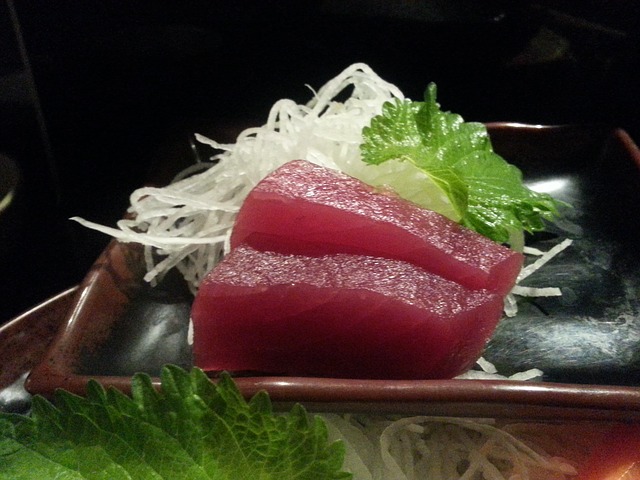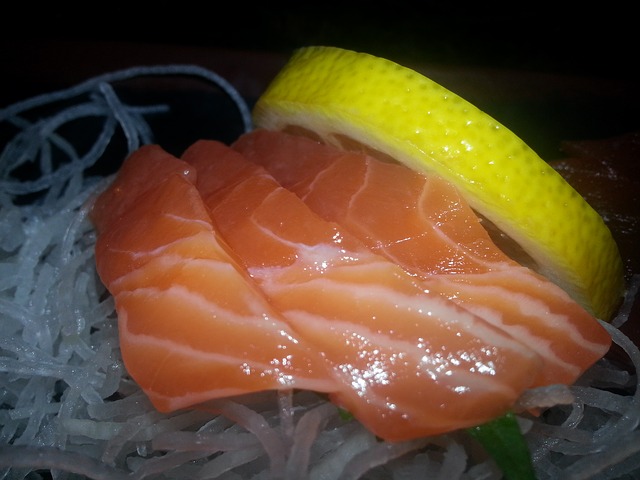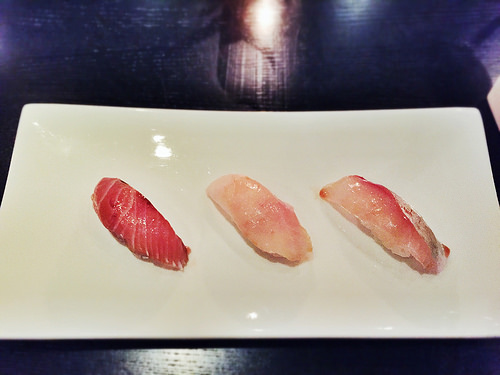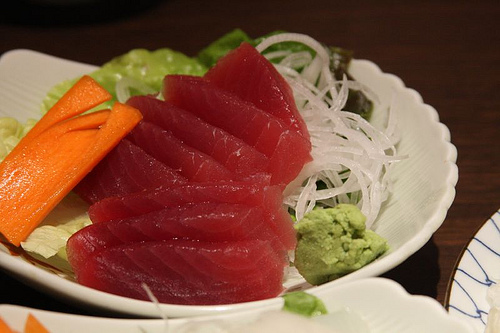What Is Sashimi And The Different Types

Sashimi is a Japanese delicacy of mainly thin sliced raw fish (or meat). The fish is usually presented alongside daikon and shiso leaves arranged artistically around each other. The meal is not complete without some dippings the commonest being soy sauce, ginger and wasabi. Many people still get confused that there is a difference between sushi as opposed to sashimi.
Since the fish or meat is served raw, a lot of care is taken to serve only the best cuts. As such, the Japanese prefer to use salt-water fish and at times freeze it to kill any parasites that it may be carrying.
Types Of Sashimi
Because fish has been an integral part of Japanese cuisine since time immemorial, it is only natural that they have found countless sea creatures that form part of the menu in sashimi restaurants. We have highlighted the commonest ones:
It has a distinctive bright orange color and is very common in sashimi restaurants. Its price varies with the cut and its belly is the most expensive cut due to its extra fattiness.

- Surf Clam (Hokkigai)
You may be surprised to find that although these clams are served as sashimi they are actually not raw but have been boiled to improve their flavor.
- Tuna (Maguro)
Maguro is also very popular sashimi fish and just like sake, different cuts fetch different prices with the priciest being the fatty belly.
- Squid (Ika)
There are many ways in which squid is served raw however; one of the most notable is ika somen which is prepared by shredding the squid into noodle-like threads.

 by avlxyz
by avlxyz
- Greater Yellowtail (Kanpachi)
This one is some-what seasonal since it is tastiest during summer. Those who don’t like their fish fatty will find kanpachi appealing because it is quite lean.

 by T.Tseng
by T.Tseng
At this point, it is important to mention that this list is by no means exhaustive; there are other forms of sea-food that you may find served as sashimi in Japanese restaurants. So, as you tour the country be on the lookout for sea urchins, octopus, blowfish and even horse meat.
How To Eat Sashimi
At any sashimi restaurant worth its salt, you will be served the fish accompanied by some dippings and there is a certain way that these dippings are to be utilized. First and foremost, you need to pour a reasonable amount of soy sauce into a bowl. Don’t be wasteful. Secondly, don’t be tempted to mix the wasabi and ground ginger into the soy sauce instead dip the fish into the soy sauce or rub it with the wasabi or ginger. This is not just less messy, but it also allows you to savor each unique taste individually. It is common to eat a piece of sashimi with your chopsticks, where as compare to Nigiri, you eat with your hands. Nowadays chopsticks are becoming the norm for Nigiri.
Disclaimer
Since sashimi is for the most part raw meat, there are certain risks associated with eating it. The biggest danger is that of parasites which may be transferred into your body. Furthermore, although sashimi is meant to be made from the freshest meat/fish certain people have devised ways of making stale fish appear fresh therefore be careful!






